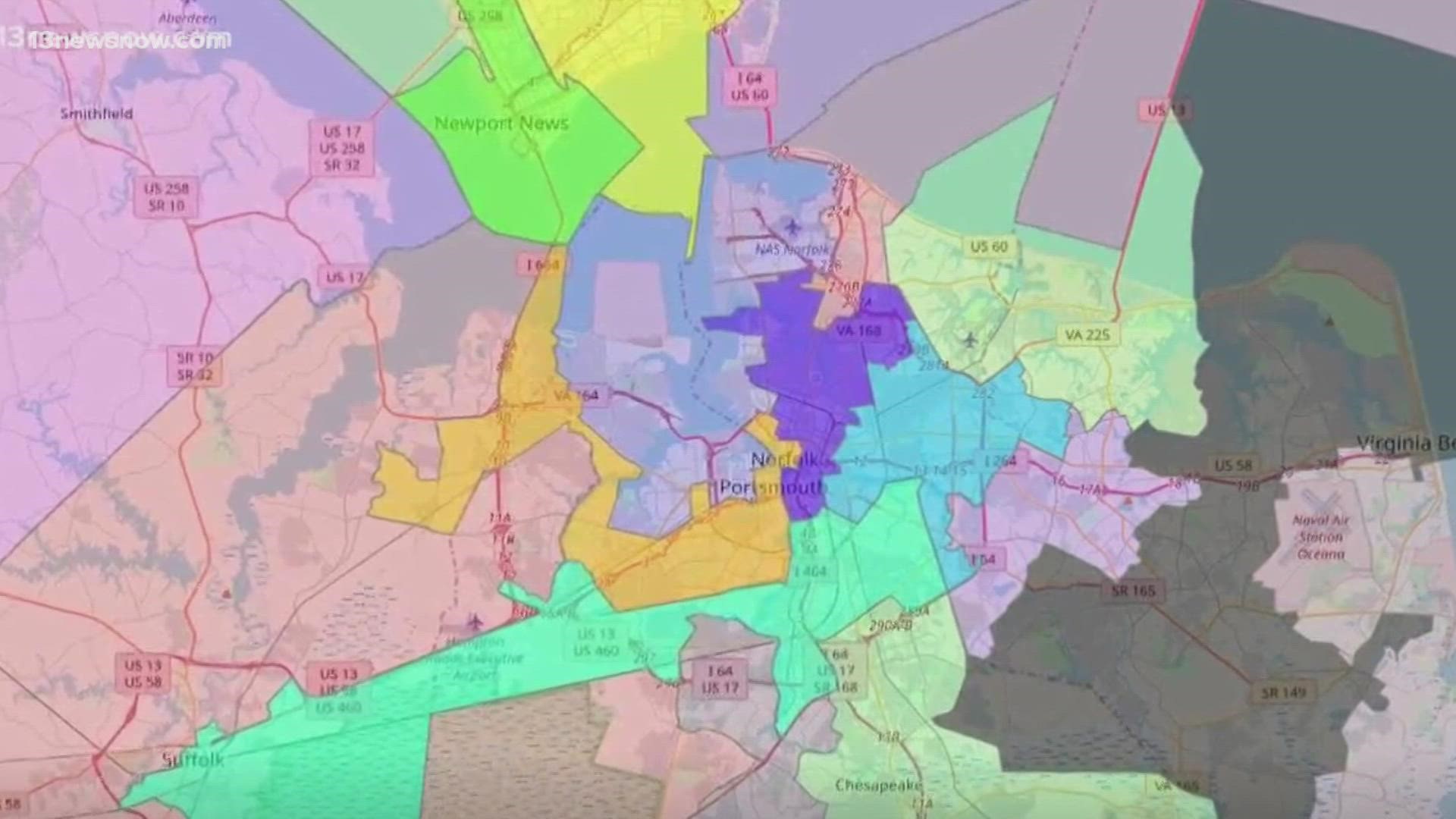NORFOLK, Va. — Virginia's newly formed Redistricting Commission is now on the clock to propose new voting maps following the release of 2020 population data from the U.S. Census Bureau.
The Redistricting Commission now has 45 days to draw new State Senate and House of Delegate maps, and two months to draw Congressional district maps.
“The pure partisan motivations that have guided this process in the past are removed or at least pretty mitigated," said Liz White, director of OneVirginia2021, a redistricting advocacy group.
The new census data shows population losses in southwest Virginia and southern parts of Virginia, with some gains in Hampton Roads and significant gains in Northern Virginia.
Commissioners are required to adjust voting districts to reach balanced representation.
"If people have been waiting to tune in, this is probably going to be when it gets exciting, we’re watching the conversations happen, very fly on the wall, the transparency measures in these laws have allowed us to do this," White told 13News Now.
Commissioners have big decisions to make – do they start with new maps or change existing ones. What’s a more fair and representative system?
In interviews with 13News Now, advocates and experts said now is the crucial time for voters to tell commissioners what they need.
"There’s complexity, and so it’s easy for people to tune out. but it’s also just vital to democracy so it’s important people do try and tune in, this affects who you get to vote for, and how your vote will count," said Jesse Richman, associate professor at Old Dominion University.
The commission is legally obligated to consider "communities of interest" in the mapping process - voters can draw maps and share recommendations for changes now.
There will be multiple public hearings in the coming months.
"The more the public is involved in the process I think the greater chance people will be satisfied with what comes out on the other side," said Rebecca Green, professor and co-director of the Election Law Program at William and Mary University.
Commissioners will also use new race and ethnicity data from the U.S. Census Bureau to draw representative maps.
"These [maps] will shape what political competition in the state looks like over the next decade, so it’s really important they get this done right," Richman said.
The Redistricting Commission has meetings on Monday and Tuesday to start figuring out how to change voting maps and what the details of the process entail.
Virginia will keep the same amount of U.S. Congressional seats.
To get involved, Virginians can:
- Submit information and answer questions about the community via this form, which is sent directly to commissioners
- Fill out a 2-minute survey that OneVirginia2021 is compiling to share with commissioners
- Draw your own community voting map and submit to the Redistricting Commission here
- Use the 'Participate' tabs on the Commission's website to submit comments
- Use Districtr to draw maps and learn what you would like to advocate for
- Sign up to speak at numerous public hearings that will be held in the upcoming months.

